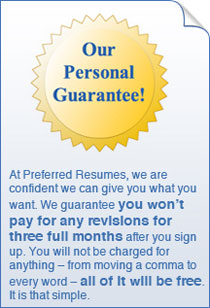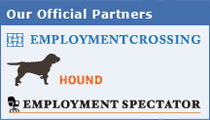Letters for Every Job Situation
|
|
The effectiveness of marketing letters can also be greatly enhanced doubling or trebling your response rate by a telephone follow up a day or two after the letter is received. In this way, you will register an impression and perhaps get an interview before the letter is lost in the pile and forgotten. You will need to take this into account when you plan the rate of issuing broadcast letters (identical letters sent to different companies/individuals). There is a limit to the number of letters you can follow up by phone (perhaps 20 or 30 a week).
The effectiveness of letter writing can be roughly evaluated by the number of interviews obtained per hundred letters sent out. As a rule of thumb, a yield of 1 to 2 percent is fair; a 10 percent yield is spectacular.
REASONS FOR WRITING
You use a cover letter whenever you send your resume" to someone. This includes answering an advertisement or posting, forwarding materials to a person who has asked for a resume, or trying to encourage the opening of a new position for you at a company.
You also send a letter after you have had an interview, to thank the interviewer. This courtesy sets you apart from the average job seeker and keeps your name in the interviewers mind. It also allows you to add or correct any information that might help you to be more favorably considered for the job.
You may wish to send your resume to executive search agencies. This special submission requires you to present your skills persuasively enough to stand out among the flood of resumes they receive, and provide the special information which they require to meet their clients' needs.
When you receive a desirable offer, you need to confirm your acceptance in writing, assuring your new employer that you will report and documenting offer conditions to avoid possible confusion and later disappointment.
After you have found a job, you then need to call or write to your references, your network, and any companies or organizations who may be considering you for a job to thank them for their time, help, and/or consideration. This not only sustains your professional image, but helps maintain your relationships for future contacts.
WHERE TO GO FROM HERE
Target your search and track your efforts. Be sure your resume and letters are suited to your target market. Selectively distribute your marketing materials to the people who can help you the most in your job search. Start by networking with people you know, who work in your desired field. Make follow up calls on a regular basis, and try to talk to as many people as possible.
Identify the companies that you'd like to work for and the organizations that have a need for your skills. Most public libraries have compendiums of corporations. Some, like the Dun & Bradstreet Directory, provide vital information that you'll need: addresses, phone numbers, names and tides of executives, and summaries of key products and markets. If you suspect that this information is not current or specific enough, call the company to make sure you're sending your resume to die proper person. Get the correct spelling of the person's name, and double check the address.
Many professional organizations have job banks. Use them. And don't overlook the organization's officers. Very often they know people throughout your field, and they know where the openings are. Use the increasing number of online resources to gather information on targeted organizations, and to broaden your access to desirable markets through resume databases. These research and planning efforts up front will be reflected in your presentation materials, and will pay off as you begin to implement your job search.
Looking for a job is a continuous process that should never end even after your search is over. Once you've landed a position, keep your network alive. Tell people where you are. Most of your network contacts will be interested in learning how your campaign turned out. Some of them were probably very involved in it and would appreciate your thanks. Make the effort to maintain this valuable network.




